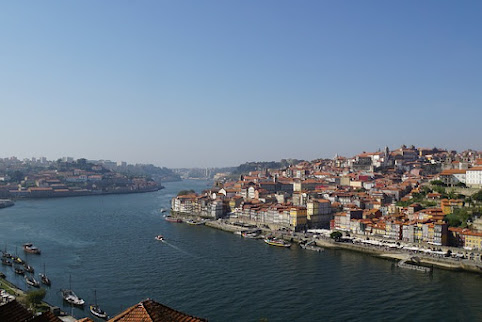 Don Yitzhak ben Yehuda Abravanel was a Jewish politician and treasurer. He has served kings of Portugal and Spain, viceroys of Naples and Doges of Venice. He also worked as a Bible commentator and philosopher. He is by far the most prominent Jewish personality of Portugal of the classical Sephardic pre-expulsion period (before 1496).
Don Yitzhak ben Yehuda Abravanel was a Jewish politician and treasurer. He has served kings of Portugal and Spain, viceroys of Naples and Doges of Venice. He also worked as a Bible commentator and philosopher. He is by far the most prominent Jewish personality of Portugal of the classical Sephardic pre-expulsion period (before 1496). Abrabanel was born in 1437 into a well-to-do Jewish noble family that had close relations to the Portuguese royal court. The family traced its roots not only to the Spanish city stronghold of Sevilla, but according to the tradition, all the way back to ancient Israel and King David. Yitzhak’s grandfather, Shmuel Abaravnel, was the Royal Treasurer of King John I of Castile.
During the Great Pogrom of 1391, Shmuel was forcibly converted to Christianity and adopted the name Juan Sánchez of Seville. Abravanel was never particularly proud of this and never mentioned this in any of his works, although he was well aware of it. His family, however, fled from the inquisition to neighbouring Portugal and immediately returned to Judaism.
Shmuel's son Yehudah – the father of Yitzhak Abravanel Tana“chand the grandfather of Yehudah Abravanel (known as ”Leone Ebreo“) and Shmuel Abravanel – became the rosh kehilla of the entire Portuguese Jewish community. He also became the treasurer of the Portuguese king Ferdinand I and, later, of the Duke of Bragança.
Yitzhak was successful in commerce and public finances. After the death of his father, he took over his position as treasurer at the court of Alfonso. He also started his literary career in Lisbon. Isaac had received extensive training and studied Portuguese, Spanish, Italian and Latin as well as the works of Plato and Aristotle. This was in addition to traditional Jewish studies. All these opened his understanding of Renaissance culture. His son Yehuda ben Isaac Abravanel was born in Lisbon.
Abravanel’s career in Portugal as treasurer of King Alfonso V ended gedolimabruptly after the king’s death in 1481. Alfonso' successor, John II, opposed the dukes of Bragança and Beja-Viseu, cousins of the king, as they were leaders of a strong nobility opposition. Both were executed in 1483 by order of the king. Abrabanel and other people associated with the Bragança house were also charged with treason.
Abrabanel fled back to Spain in 1483 and was sentenced to death in May 1485 in absentia. He settled in Alcalá de Henares, where he became tax collector to Cardinal Pedro González de Mendoza. Seven years after his arrival in Spain, he held a position similar to that previously held in Portugal. He worked as a tax collector of the powerful Mendoza family and as financial advisor to the Catholic Monarchs Isabella I and Ferdinand II. Their campaign against the last Moorish city of Granada was supported by Yitzhak’s loans and other financial operations.
Again, in the service of Ferdinand I and his son Alfonso II, Abrabanel again proved to be a successful businessman. He was able to acquire a considerable fortune over the course of two years. In addition, he also had time for philosophical and theological occupations. He wrote numerous commentaries on the Pentateuch, the biblical prophets and Maimonides.
Before the approaching soldiers of the French King Charles VIII, Abrabanel followed Alfonso II to Sicily. After Ferdinand I first recovered Naples, Abrabanel gave up his plan to flee to Constantinople, and returned from Corfu to Monopoli, a small port on the Adriatic coast. After the Kingdom of Naples finally fell into the hands of the Spaniards, Abrabanel moved in 1503 on to Venice, where his son Joseph worked as a doctor.
The latest Portuguese discoveries called into question Venice's leading role in the spice trade. Abrabanel offered to negotiate with the Portuguese for the Council of Ten. Although the Portuguese, proud their new expeditions, showed no interest and the mission failed, it shows how Yitzhak Abravanel must have been incredibly politically and rhetorically gifted and had mastered the ”art of shmoozing“.
During the 1460s, Abrabanel began his work as a writer of philosophical works and as a biblical interpreter. He wrote the ”Zurot ha-Yesodot“ (”Forms of the Elements“) and ”Ateret Sekenim“ (”The Crown of the Ancients“). They showed his thorough understanding of Arab philosophy and Jewish theology.
In Naples, he wrote a commentary on the Two Books of Kings and ”Zedek Olamim“ (”Eternal Justice“), on the theme of Divine Providence. In Corfu he finished a commentary on Isaiah. In Monopoli he wrote ”Yemei Olam“ (“ Days of the World“), as well as a commentary on the Pessach Haggadah. The two books of Bible commentary entitled ”Migdal Yeshu’ot“ (”Fortress of Security“) and “Ha’Shem“ (“Acts of G-d“) deal with the Divine Creation. His Bible commentaries deal with all the books of the Tanakh . After printing three of his works in Constantinople in 1505, he ended his commentaries on the books of the Bible and on Maimonides; the latter has been preserved only incompletely.
Yitzhak ben Yehuda Abravanel died in Venice in 1508 and was buried in Padua, but his legacy is still alive to this day, which you will easily find out if you take a kosher tour to Portugal.













